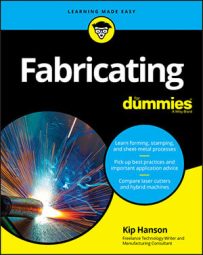- Aluminum: Everyone knows aluminum. It’s used to make soda cans, siding for houses, car parts, and everything in between. To simply call it “aluminum” however, is grossly misleading, as virtually all of the dozens and dozens of aluminum alloys contain zinc, magnesium, silicon, and even iron, without which “aluminum” would be of little value. Whatever the case, aluminum is generally quite malleable and easy to shape, although some alloys can be challenging to weld.
- Carbon steel: Sometimes called mild steel (not because it’s easy to get along with), carbon steel typically contains between 0.05 percent to 0.50 percent by weight of the element carbon. That said, ultra-high carbon steel like the stuff used to make knife blades contains up to 4 percent carbon and can be made quite hard through heat treating.
- Alloy steel: Here’s where things get fuzzy. Chemically, alloy steels aren’t all that different from carbon steels except that the metallurgists working in their dark towers toss a little chromium, molybdenum, manganese, and other “alloying elements” into the crucible during the manufacturing process. These serve to make relatively wimpy carbon steel into tough, wear-resistant, and eminently hardenable alloys such as 8620 and 4140 steels.
- Stainless steel: Increase one of the alloying elements just mentioned — chromium — to around 10 percent or so and rust-prone alloy and carbon steels will stay shinier than a new penny, no matter how caustic the environment. Sadly, chromium is tough stuff. Metalworking tools require more frequent attention when cutting or forming stainless steel, and the machinery needs more power and greater rigidity to process it.
- Superalloys: Take already tough stainless steel and mix in a little nickel, tungsten, vanadium, or all of the above. Now you have a metal that’s not only more attractive than a Hollywood starlet, but also more rugged than Harrison Ford and Dolph Lundgren combined. Be careful, though. This stuff is not much fun to work with, despite its broad appeal to the aircraft, military, and power-generation industries.

